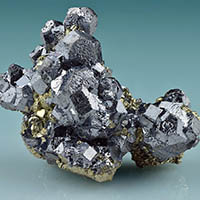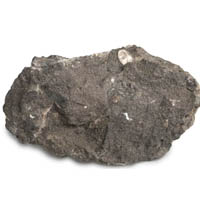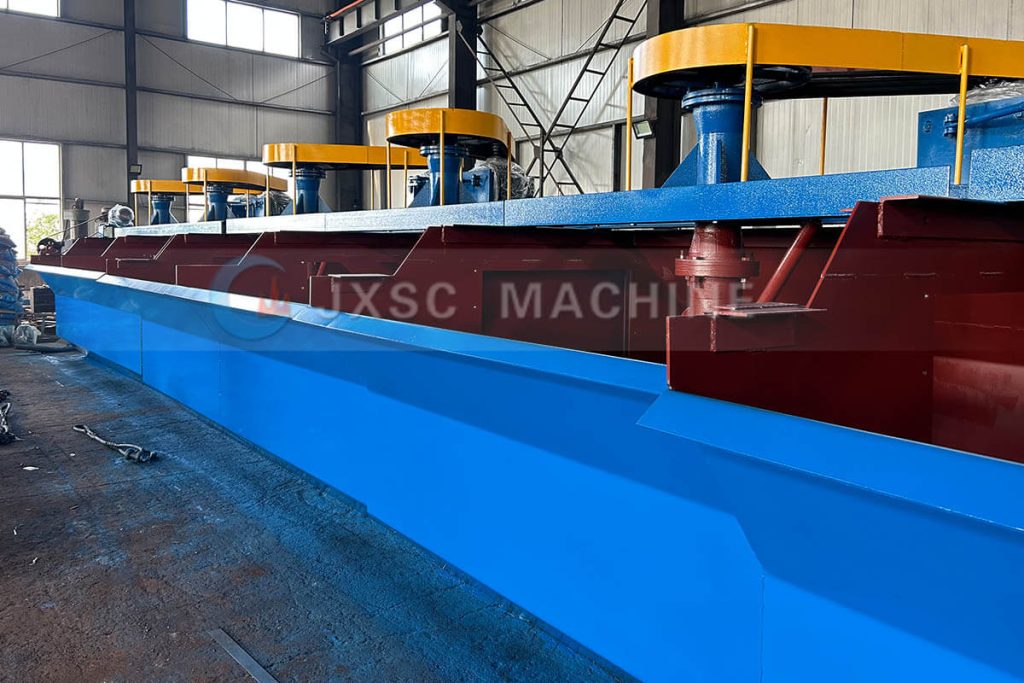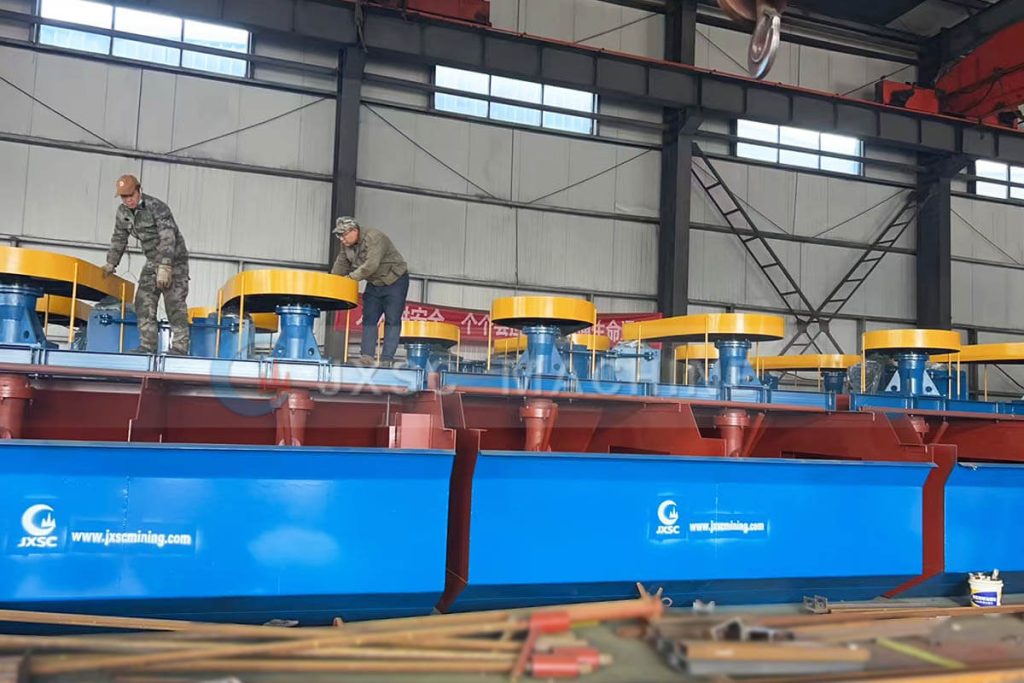Why has the difference in lead-zinc flotation between sulfide ores and oxide ores become a core factor in determining the economic benefits of mines? Oxide ores account for over 35% of global lead-zinc ore resources, and the choice of flotation process directly affects resource utilization and environmental compliance. However, sulfide lead-zinc ores (such as galena PbS and sphalerite ZnS) can generally be enriched at a relatively high efficiency, while oxide lead-zinc ores (such as cerussite PbCO₃ and smithsonite ZnCO₃) have become industry difficulties due to their low recovery rates and high reagent consumption. This article will systematically analyze the key differences in mineral properties, flotation principles, and equipment selection between sulfide and oxide lead-zinc flotation. Understanding this difference is not only the key to optimizing mineral processing processes, but is also directly related to production costs and resource utilization.
The flotation of lead-zinc from sulfide and oxide ores exhibits significant differences in ore properties, reagents, equipment, and process selection. This significantly impacts process selection accuracy and resource utilization. Sulfide ores, leveraging their natural hydrophobicity, can achieve high recoveries using conventional flotation processes involving “rough sweeping and concentrating.” Oxide ores, on the other hand, require desliming pretreatment followed by sulfiding agent modification, coupled with a combined “gravity separation” and flotation process to overcome bottlenecks.
1. Differences in Ore Properties

Sulfide Lead-Zinc Ores:
Predominantly galena (PbS) and sphalerite (ZnS), these minerals have high sulfur contents (>20%). Their surfaces are not easily wetted by water, allowing collectors to quickly adsorb and form stable mineralized foams. Therefore, conventional xanthate reagents can achieve high recoveries. Their low hardness (Mohs hardness 2-4) and compact crystal structure maintain good monomer dissociation during grinding, reducing interference from overgrinding and mud formation on flotation. Their relatively stable physicochemical properties make them the most user-friendly raw material for lead-zinc beneficiation.

Oxide Lead-Zinc Ores:
Predominantly cerussite (PbCO₃) and smithsonite (ZnCO₃), these minerals have high oxygen contents and complex associated gangue minerals (such as silicates and carbonates). These minerals are rich in hydroxyl and carbonate groups on their surfaces, which easily bind to water molecules to form a hydration film, making it difficult for collectors to effectively adsorb them. However, the oxidized ore will produce a large amount of fine ore slime during the crushing process, which requires pretreatment (such as desliming and sulfidation) and has poor floatability.
2. Differences in Flotation Reagent Selection
Sulfide Lead-Zinc Flotation Reagents:
Xanthate collectors (such as ethyl xanthate and butyl xanthate) are ideal for this type of ore. The thiocarboxyl groups in their molecules specifically form strong chemical bonds with metal ions on the surface of sulfide minerals. Combined with traditional frothers such as pine oil, they can create a stable three-phase froth system, achieving lead and zinc recoveries exceeding 90%.
Commonly Used Reagents: Xanthate Collectors (such as ethyl xanthate) and pine oil frothers.
Oxidized Lead-Zinc Flotation Reagents:
Oxidized lead-zinc ores require a specialized “activation first, collection later” reagent strategy. Sodium sulfide (Na₂S) is the most critical activator, reacting with metal oxides on the surface of the oxidized ore to form an artificially hydrophobic sulfide film. This pretreatment requires strict control of the sodium sulfide dosage, as excessive amounts can lead to a strong inhibitory effect. Activated oxide ores are typically treated with fatty acid collectors (such as oleic acid and cyclohexane acid). These agents contain long carbon-chain hydrophobic groups, effectively coating the mineral surface. However, this agent system is susceptible to slurry temperature and water hardness, requiring the use of a conditioning agent such as sodium carbonate.
Common agents include sodium sulfide (sulfiding agent), amine collectors, and water glass (inhibitor).
Lead sulfide ores can achieve ideal performance with low-cost xanthate and a simple frother, while lead oxide ores require not only sodium sulfide activation but also a complex frother and expensive fatty acids. This significant difference in agents directly impacts beneficiation costs and economic benefits.
3. Differences in Flotation Principles
flotation principle of lead-zinc sulfide:
It is based on the principle of “natural floatability.” Sulfide ions on the surface of sulfide ores can form stable metal chelates with the isothiocyanate groups of xanthate collectors (such as butyl xanthate). In a weakly alkaline slurry, the non-polar groups of the collector align to form a hydrophobic film, allowing the mineral to attach to bubbles and rise.
Key conditions: Weakly alkaline slurry (pH 8-10), no sulfidation treatment required, and fast flotation speed.
flotation principle of lead-zinc oxide:
It is achieved through “artificially modified floatability.” First, sodium sulfide is added as a sulfiding agent. The ions produced by its hydrolysis react with the metal ions on the oxide surface, forming a sulfide film. Subsequently, amine collectors (such as dodecylamine) or fatty acids (such as oxidized paraffin soap) are added to the surface of the sulfide film through electrostatic attraction in a strongly alkaline slurry.
Key conditions: Strongly alkaline slurry (pH 11-13), the addition of an activator (such as copper sulfate) is required, and the flotation cycle is long.
Flotation of sulfide lead-zinc ores can simplify process design, often employing a classic “roughing, two finishing, and one sweeping” configuration. However, processing lead-zinc oxide ores requires the addition of a pretreatment stage, with a typical process consisting of “sulfide activation → roughing → multi-stage finishing.”
4. Differences in Process and Equipment Selection
Sulfide Lead-Zinc Flotation Process:
Sulfide ore separation typically utilizes a classic three-stage flotation process: a roughing stage, a cleaning stage, and a scavenging stage. In the roughing stage, rapid flotation is used to recover the majority of the sulfide minerals, keeping collector dosage low. The scavenging stage enhances tailings recovery and appropriately increases collector concentration. The cleaning stage improves the concentrate grade through multiple enrichment stages.
Equipment Requirements:
This process design is simple and efficient, achieving ideal performance when combined with conventional mechanical agitation flotation cells (such as the XJK and XCF series). Notably, due to the rapid flotation speed of sulfide ores, the use of high-capacity aerated mechanical agitation flotation cells (such as the JJF and KYF models) can significantly increase production capacity.

Oxide Lead-Zinc Flotation Process:
In oxide ore processing, desliming pretreatment is a critical first step to reduce the impact of slime on collector consumption. For example, after the raw ore is ball milled to a -200 mesh size of 60%, it enters a spiral classifier for classification. The overflow then enters a high-frequency vibrating screen for the first stage of desliming. The undersized sludge is dewatered in a high-efficiency concentrator and discarded. The oversize product enters a hydrocyclone for secondary desliming, ultimately reducing the sludge content to less than 8%. For highly silty or refractory oxide ores, a combined gravity separation and flotation process is required. A shaker is used to recover the coarse oxide lead and zinc ore before the fine fraction enters the flotation system.
Equipment Requirements:
JJF mechanical flotation machines should be used in the pre-flotation sulfidation stage to ensure thorough mixing of the reagents. A BF aerated flotation cell should be used in the flotation stage to ensure adequate contact between the slurry and the reagents. Auxiliary equipment, such as a classifier or screening equipment, should also be provided for pre-deslimming.

Sulfide ores and oxide ores differ significantly in their ore properties, flotation reagents, separation principles, equipment, and process flows. Sulfide ores, due to their natural hydrophobicity, can be efficiently recovered using xanthate collectors. Oxide ores, on the other hand, require sulfidation pretreatment and the use of fatty acid-based reagents, making the process more complex. Maximizing lead and zinc ore recovery efficiency depends on the appropriate selection of reagent systems, optimized flotation parameters, and specialized flotation equipment. Whether you’re dealing with sulfide or oxide ores lead-zinc processing, please feel free to contact JXSC. We can customize beneficiation equipment and solutions tailored to your ore properties and production needs.